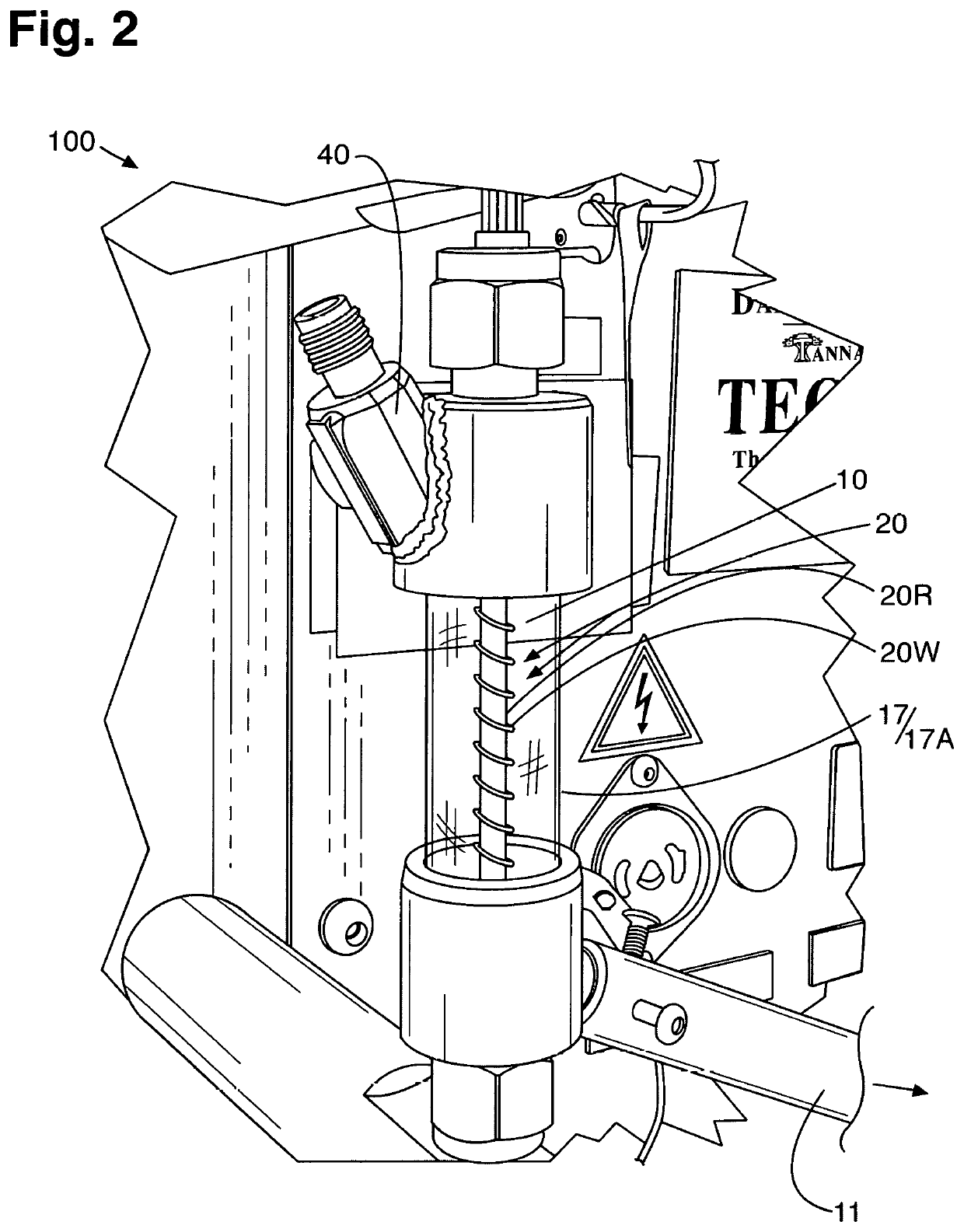Thin film liquid thermal testing
a thin film, liquid thermal testing technology, applied in the direction of liquid-gas reaction of thin film type, instruments, measurement devices, etc., can solve the problems of special difficulties caused by deposits and increase in number
- Summary
- Abstract
- Description
- Claims
- Application Information
AI Technical Summary
Benefits of technology
Problems solved by technology
Method used
Image
Examples
example 1
[0037]Apparatus as of FIG. 1 is used to test various reference engine oils on two separate apparatus by two separate groups, Savant R&D (SAV) and Tannas R&D (TAN). A PYREX® glass mantle as in FIGS. 4A-4D is employed with a commercially available TEOST® MHT® steel depositor rod having a steel spring helically wound around its midsection. Oil inlet is at the top of the rod. A ferric naphthenate catalyst (0.44 mg Fe / mL test oil—a 33C catalyst at MHT® test loading) is employed. Thermocouple depth is 9.7 cm. The thermocouple control placed at the desired “hot” spot on the rod, as established by a calibration method, from which the test temperature is maintained. Placing the thermocouple at a specific location ensures good temperature control at that location. The test temperature, which the thermocouple measures, is a constant 285° C., with moist air alone being employed at a 10-mL / minute flow rate. Moist air is used because it mimics normal humid air, which in an operational turbocharge...
example 2
[0041]Reference oils from the list set forth above for use in the examples are tested and benchmarked against standard TEOST® MHT® and TEOST® 33C tests for comparison. In addition to the oils employed in Example 1, another passing oil, Oil B, is employed.
[0042]The reference oils are tested according to the protocol of Example 1, excepting that an 18-hour run time (vs. the 24-hour run time of Example 1) and a temperature of 290° C. for the heatable depositor-receiving surface 20 is employed for the Turbo unit, i.e., for the configuration of the instant invention employed in the present example. For the TEOST® MHT® testing of the same reference oils, both employ only moist air as in Example 1, but otherwise are carried out according to ASTM D7097 and ASTM D6335 standard test methods, respectively. Results are depicted in FIG. 6.
[0043]This shows that ability to differentiate passing oils from failing oils is enhanced in comparison to the legacy tests. Results from the TEOST® MHT® testi...
example 3
[0044]Additionally, reference oils are tested according to the protocol of Example 2. For comparison, those results are benchmarked against TEOST® MHT® testing as a control, and modified TEOST® MHT® testing at a higher temperature of 300° C., both using only the moist air as in Example 2 but otherwise per ASTM D7097. Results are depicted in FIG. 7.
[0045]This shows that deposit levels can be altered from temperature differences under TEOST® MHT® conditions. Also, it is noted that the TEOST® MHT® testing, even at 300° C., does not lead to the extent of separation of the instant invention (Turbo) at 290° C., as deposit levels tend to increase proportionately across all oil types as compared to the preferential separation from the instant invention (Turbo), which employs the cylindrical, straight-wall glass mantle and other features of the instant invention.
PUM
| Property | Measurement | Unit |
|---|---|---|
| non-orthogonal angle | aaaaa | aaaaa |
| temperature | aaaaa | aaaaa |
| temperature | aaaaa | aaaaa |
Abstract
Description
Claims
Application Information
 Login to View More
Login to View More - R&D
- Intellectual Property
- Life Sciences
- Materials
- Tech Scout
- Unparalleled Data Quality
- Higher Quality Content
- 60% Fewer Hallucinations
Browse by: Latest US Patents, China's latest patents, Technical Efficacy Thesaurus, Application Domain, Technology Topic, Popular Technical Reports.
© 2025 PatSnap. All rights reserved.Legal|Privacy policy|Modern Slavery Act Transparency Statement|Sitemap|About US| Contact US: help@patsnap.com



